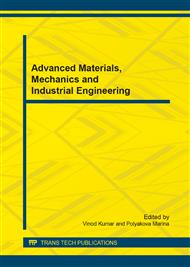p.476
p.481
p.486
p.493
p.498
p.505
p.510
p.516
p.524
Semi-Forward Adaptive Simulation Approach for Tube Hydroforming Loading Path Determination Using a Strain Trajectory Based Fuzzy Logic Control
Abstract:
Tube hydroforming process is a well-established manufacturing process widely employed to form tubular parts that are lighter and stronger compared to those from stampings. Nevertheless, determination of process loading paths, i.e. axial feed distance versus hydraulic pressure, still typically relies on trial-and-error FEM approach. In this paper, a semi-forward adaptive simulation concept is proposed as an effective FEM approach, able to select a feasible THF loading path within a single FEM simulation run. The semi-forward adaptive simulation technique is based on the ability to “adapt” or adjust the loading path as to keep the forming strains within a preferred stain trajectory over the course of a simulation run. Forming strains at the current simulation time step are used as inputs to the fuzzy logic control; the output sets are then used to readjust the loading path for the current and next time steps. This semi-forward adaptive simulation scheme allows one to “correct” the loading path at the current time step as well as to better predict the forming strains in the next time step. It was found that the corrective and predictive nature of this semi-forward simulation approach coupled with the strain trajectory based fuzzy logic control scheme could handle a highly non-linear forming behavior of tube hydroforming processes effectively. In this work, a feasible loading path was determined thru only one simulation run for successful hydroforming of an eccentric bulged tubular part.
Info:
Periodical:
Pages:
498-504
Citation:
Online since:
July 2014
Keywords:
Price:
Сopyright:
© 2014 Trans Tech Publications Ltd. All Rights Reserved
Share:
Citation:


